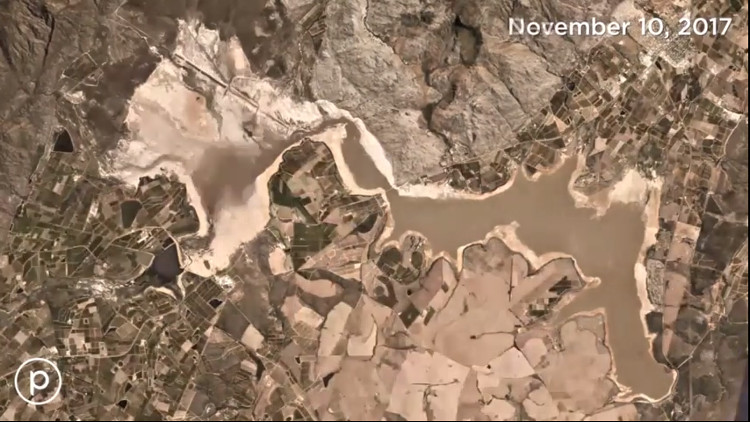South Africa hydroelectric dam has a capacity of 480 billion liters of running water
The largest hydroelectric dam in the capital of South Africa will likely dry up in mid-April, leaving millions of people lacking access to water.
The latest images from NASA satellites for water levels at Theewaterskloof, the largest reservoir in South Africa's Cape Town capital are alarmingly low. Millions of people are facing an unprecedented crisis of water, CNN reported on January 31.

The lake will probably run out in the middle of April this year.
Theewaterskloof dam at this week is only about 13% of the maximum capacity of the lake and continues to decrease deeply. Experts warn that the lake will probably run out completely in mid-April this year.
Theewaterskloof hydroelectric dam has a capacity of more than 480 billion liters of water and accounts for about 53% of the total water volume of the entire hydroelectric dam system in the region. This is the main water supply for more than 4 million people in Cape Town.
Drought, and is causing unprecedented battles in the second most populous city of South Africa. The city government had to limit the amount of water used by the people. Starting today, the people of Cape Town are only allowed to use up to 50 liters of water per day.
Satellite imagery shows that the Theewaterskloof hydroelectric dam is gradually depleted year by year.(Video: CNN).
- 10 reasons to drink water daily
- The reason why more than 2 billion people are about to have no clean water to use
- Find alien organic material at the top of Mount South Africa
- Africa faces the risk of water depletion
- The construction site of the second largest hydropower station in the world
- Solar panels have the ability to filter water straight from the air
- South Africa established a climate change center
- How does the human body change when running a marathon?
- Find out why the temperature in South Africa increases
- The hippopotamus laughed at the lion after running away
- The device makes drinking water just ... sunshine
- The device that produces 38 liters of clean water in an hour from thin air will be a lifesaver for the future human
 'Fine laughs' - Scary and painful torture in ancient times
'Fine laughs' - Scary and painful torture in ancient times The sequence of numbers 142857 of the Egyptian pyramids is known as the strangest number in the world - Why?
The sequence of numbers 142857 of the Egyptian pyramids is known as the strangest number in the world - Why? History of the iron
History of the iron What is alum?
What is alum?